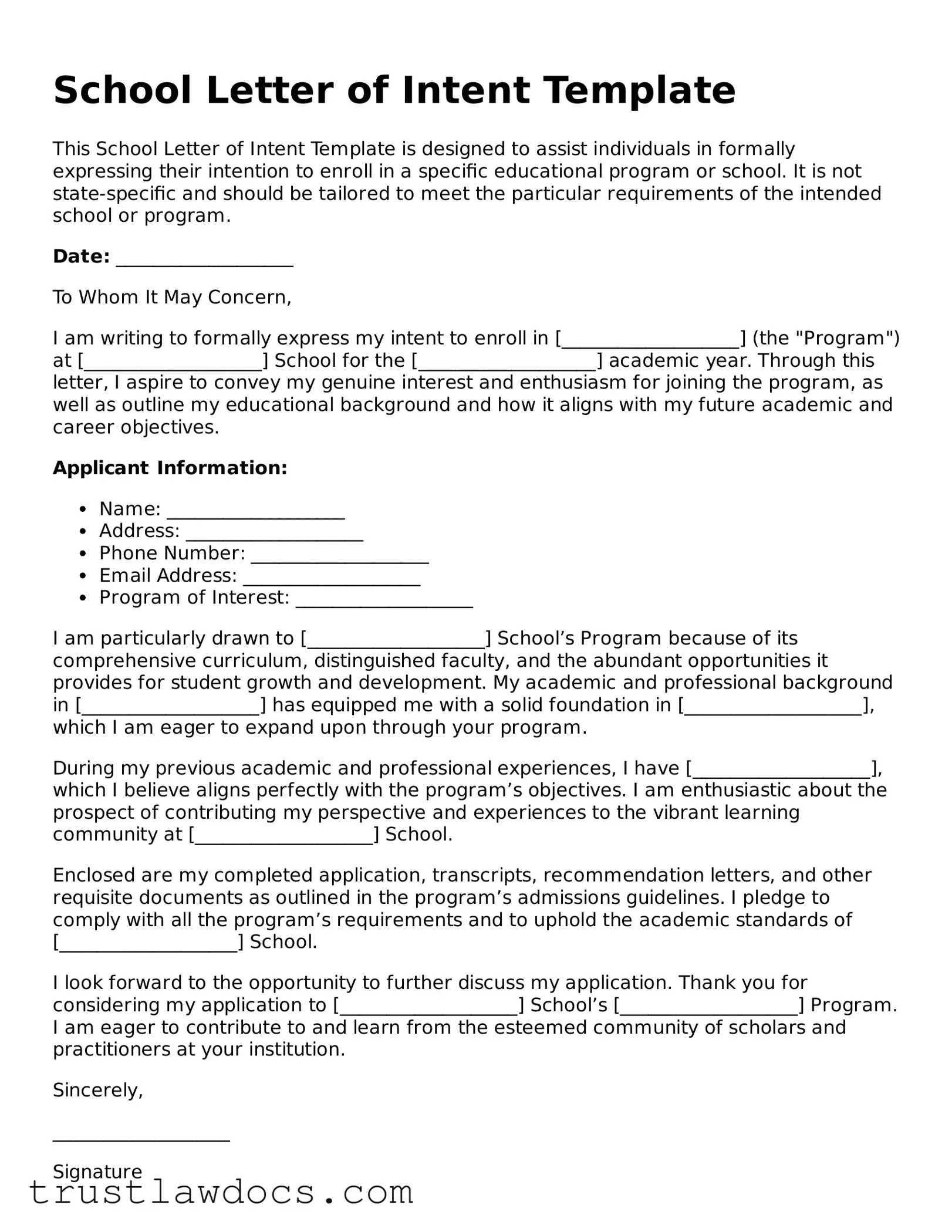What is a School Letter of Intent?
A School Letter of Intent is a document used by parents or guardians to express their child's intent to enroll in a particular school. This letter is an initial step in the enrollment process, signifying the parent or guardian's interest in securing a place for their child at the school.
Why do I need to submit a School Letter of Intent?
Submitting a School Letter of Intent is crucial as it communicates your interest to the school and allows the administration to anticipate the number of prospective students. This helps in planning classes, allocating resources, and ensuring adequate staffing for the upcoming academic year.
What should be included in a School Letter of Intent?
A School Letter of Intent should include basic information such as the student's full name, date of birth, current grade, the grade the student is applying for, and contact information for the parent or guardian. It's also helpful to mention why you are interested in the school and any specific programs or extracurricular activities that caught your attention.
Is there a deadline for submitting the School Letter of Intent?
Yes, schools often have a specific deadline for submitting a Letter of Intent, typically before the enrollment period for the new school year begins. It's important to check with the specific school you're applying to for their deadline to ensure your letter is submitted on time.
Where do I submit the School Letter of Intent?
The submission process varies by school. Some schools request that letters be submitted electronically through their website, while others may require a physical copy to be mailed or delivered in person. Always check the school's official communication for submission guidelines.
Can I submit a School Letter of Intent to more than one school?
Yes, you can submit a School Letter of Intent to multiple schools if you are considering different options for your child's education. However, if your child is accepted and you decide to enroll them in a particular school, you should notify the other schools to withdraw your application.
What happens after I submit the School Letter of Intent?
After submission, the school will review your Letter of Intent along with any other required documents. You may be contacted for further information or documents, or to schedule an interview or school visit. The school will then inform you about the next steps in the enrollment process.
Is a School Letter of Intent binding?
No, a School Letter of Intent is not legally binding. It is a declaration of interest but does not commit you or your child to attend the school. The formal enrollment agreement, which is completed later in the process, is the binding document.
Who can I contact if I have more questions about the School Letter of Intent?
If you have more questions about the School Letter of Intent, you should contact the school's admissions office directly. They can provide specific information related to their process and assist you with any queries you may have about completing and submitting the letter.
